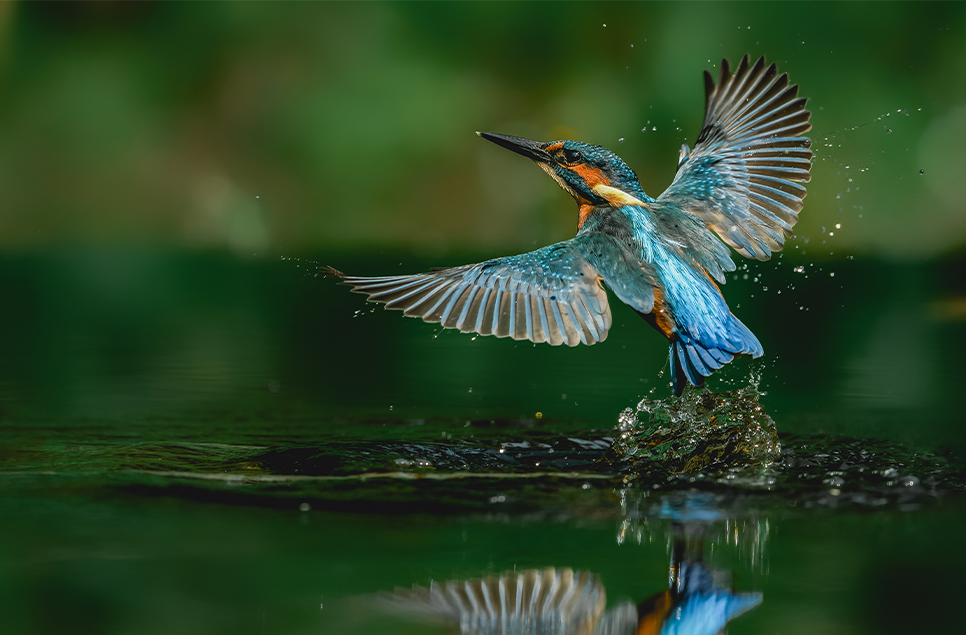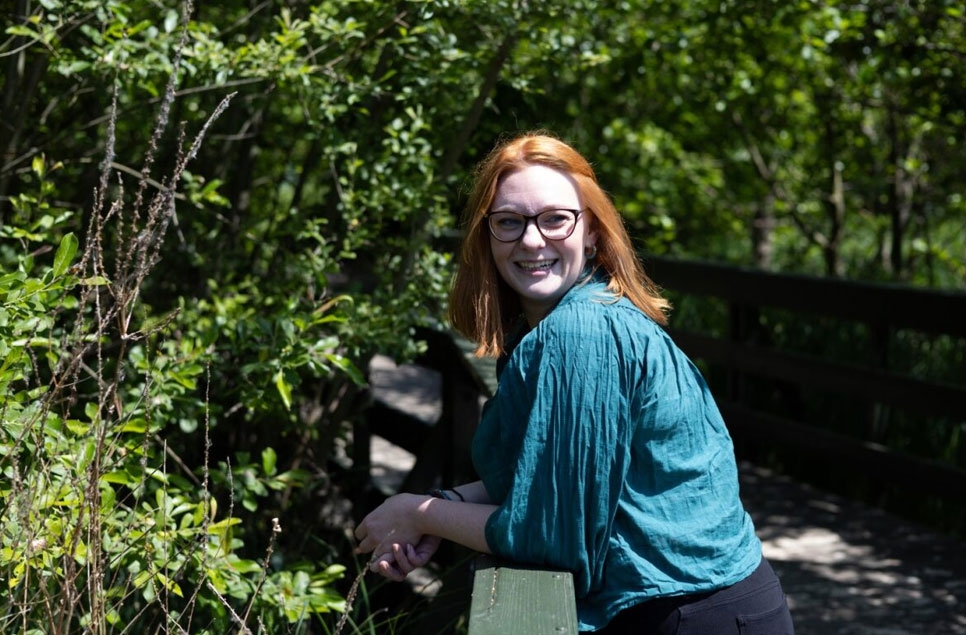Things you might not know about the humble moorhen
How do you tell the difference between a coot and a moorhen? They actually have quite a few diverse characteristics. Learn more about the life of the humble morning and how they are actually quite complex characters.
Widely found skulking around ponds, lakes and wetlands across most of the UK, moorhen are easy to overlook. Aren’t moorhens just a less confident version of a coot? But once you know about the secret lives of moorhens, you’ll notice that they’re actually worth taking a closer look at.
Catrin Eden, one of our 2019 placement students at WWT Caerlaverock, did just that when she decided to study the worrying decline of moorhens in the area to try and work out what was going on. While doing the study, she discovered that they had many delightful attributes. She says:
Doing this project has made me realise that it is important to pay attention to the species that are often overlooked. Spending hours watching the moorhens has provided me with a fascinating insight into their behaviour and also provided me with many moments of laughter. Next time you are on the reserve, spend some time watching them - they may not look much, but they have barrels of attitude and a big personality!
First things first, here are some identification tips that will make you realise that moorhens and coots aren’t all that similar.
What's the difference between a moorhen and a coot?
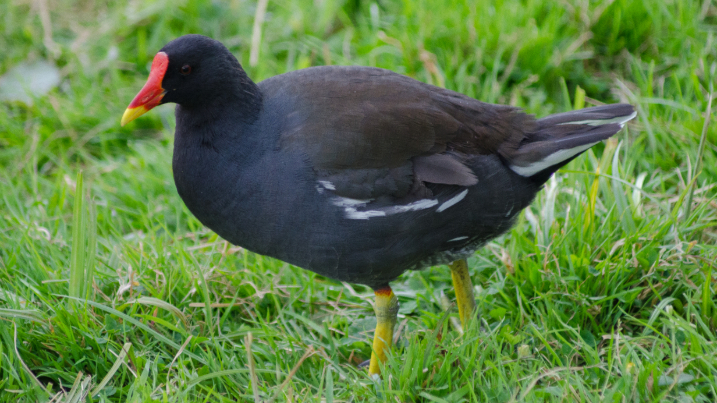
Coots are almost entirely black in plumage, but they have a rather dirty-white bill and a neater white shield over the forehead. Moorhens have orange bills with a yellow tip. Aside from the more obvious red and yellow bill versus white, there are some other differences in plumage. The body plumage of the moorhen is coal-black below and blackish-brown above, the two parts of the plumage bisected by a very prominent white line across the body. Their bottoms (under-tail coverts) are boldly white and cut in half by a narrow black line.
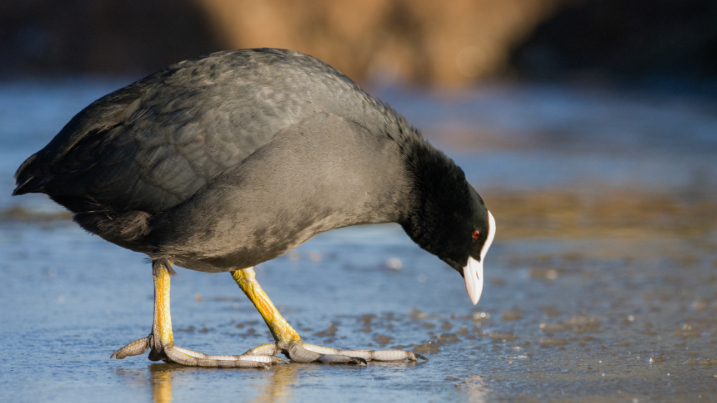
Coots have lobed feet whilst moorhens have little chicken feet. Moorhens have greenish legs and coots, grey-blue. Coots are the slightly bigger birds and are more likely to be found swimming on open water. They like to dive underwater for their food.
10 moorhen facts
1. It’s been discovered that their apparent nervous tic, the constant flirting of the tail, is exactly that: a nervous tic. But it has a purpose. The flicking reveals the bird’s white bottom, and this is a signal to a predator that the individual is awake and vigilant and therefore primed to flee from any planned attack. The closer the moorhen is to danger, or the more exposed it feels, the more rapidly it flicks.
2. The orange-red bill with a bright yellow tip is actually coded so other moorhens can tell how healthy an individual is - much as flamingos do. Scientists have shown the different colours on the bird’s bill are actually health indicators. The red seems to be related to low levels of bacterial infection, and the yellow to blood parameters such as resistance to infection. The brighter the colours, the more attractive the bird is deemed.
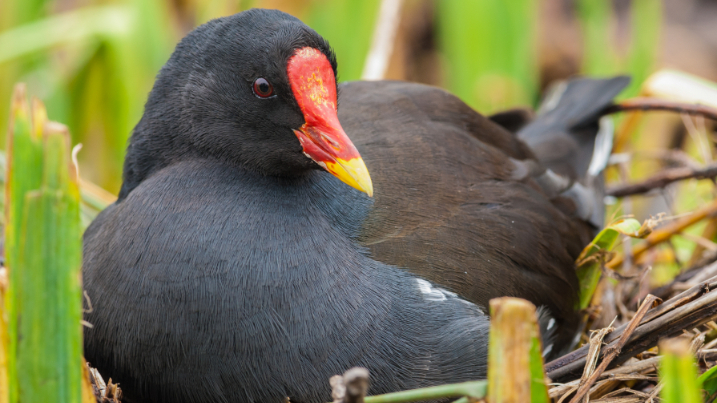
3. Unfortunately, no one has yet worked out what the orange garters at the top of their legs are for!
4. For a female moorhen, a small, fat male is preferred as a mate.
5. Moorhen nests are constructed of dead vegetation and placed among floating plants or on the ground adjacent to water, easy for everyone to see. But not all eggs in the nest will be the mother’s, as moorhens have a strange practice of putting their eggs in the nest of others! This is a strategy that the moorhen uses to increase her own egg production. Unfortunately, it’s not always possible to tell which egg is the offending intruder, so rather than risk her own brood, the recipient might just accept the new egg.
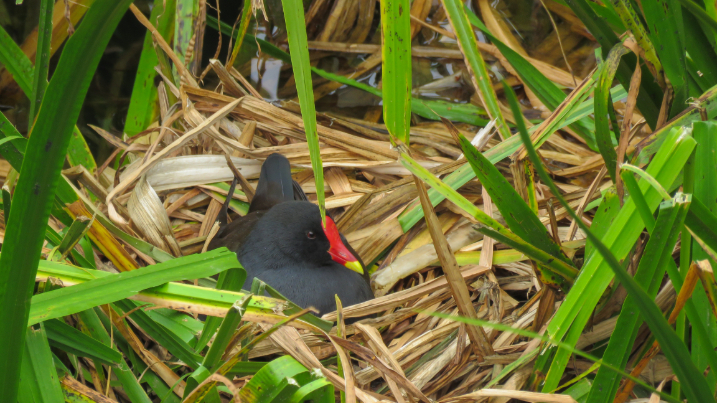
6. Moorhens are quite promiscuous and during breeding season, there’s quite a lot of risque pair-swapping going on. It would seem that free love is a common practice in the moorhen world.
7. But moorhen courtship is actually quite sweet. The male approaches the female with his bill dipped into the water, and they eventually start nibbling at each others’ feathers. They then work together to build and defend their scruffy looking nests from other wildlife, often aggressively.
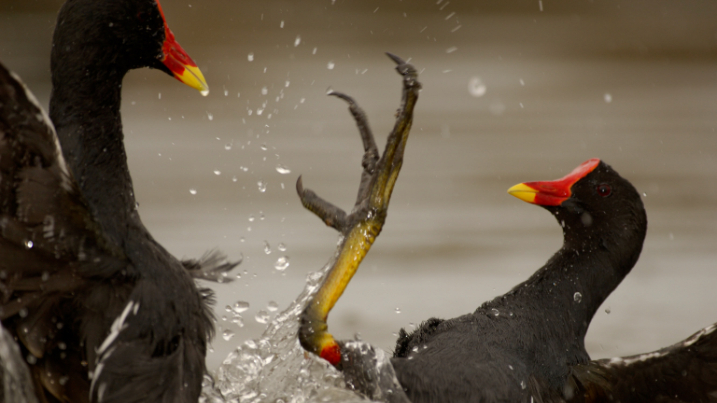
8. Continuing this love-in, older moorhen chicks often help their parents out rearing the younger chicks, bringing them food and protecting against predators. It’s a family-centric model that’s a lot more appealing than in some bird species!
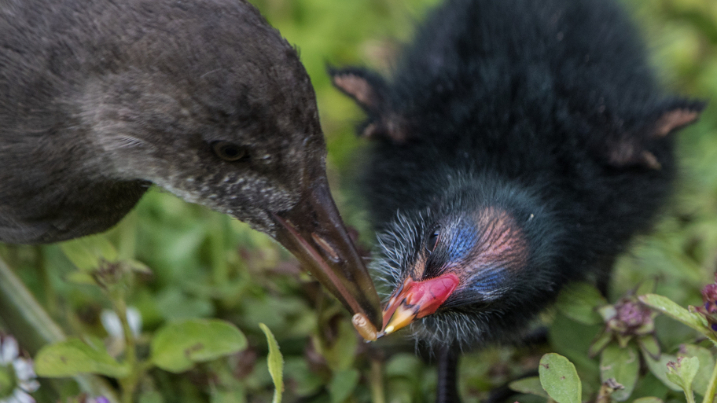
9. Moorhens probably don’t compete with coots for food - although they are closely related species. Coots dive to eat waterweed and algae, whilst moorhens feast on snails, insects, berries and even small fish.
10. A moorhen may be a common sight but in the far north of Scotland, they’re pretty scarce - so don’t be surprised if you’re birdwatching up there and there’s a bit more of a fuss made about this seemingly everyday bird.
Unfortunately, the results Cat found at Caerlaverock were cause for concern, showing that since 1988 moorhen numbers on the reserve have dropped by 27%. She did this by reviewing historic records and monitoring the current moorhen breeding population. This decline is reflective of moorhen numbers nationally, although more work was needed to determine the cause. She says:
One year of monitoring is not enough to make conclusions on the cause for decline but my project has highlighted the fact that moorhens have been declining, and if the poor breeding success continues their numbers will not recover. I would emphasise that longer-term monitoring is needed for this often-forgotten species, so that hopefully we can discover what is going wrong and what we can do to help them.
Reserved for nature
Our reserves and conservation work are aimed at protecting wetlands for a huge range of species, including those we sometimes overlook but which are no less wonderful. We’re excited to welcome you back to our wetlands, although spaces are limited at the moment.
Find your nearest wetland site